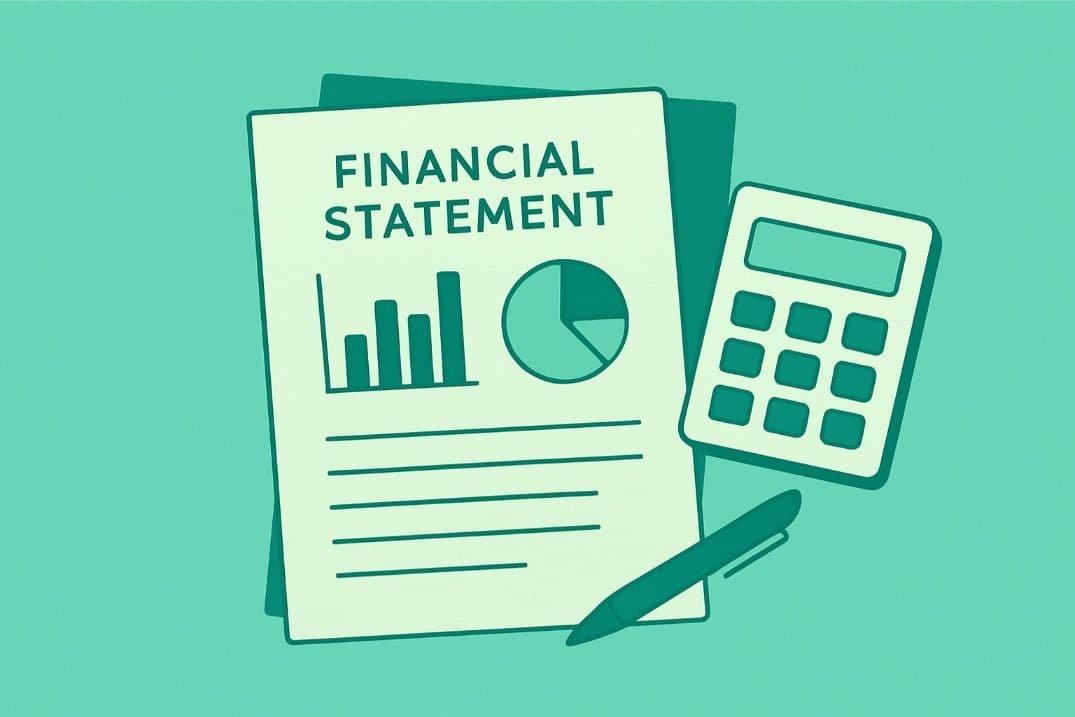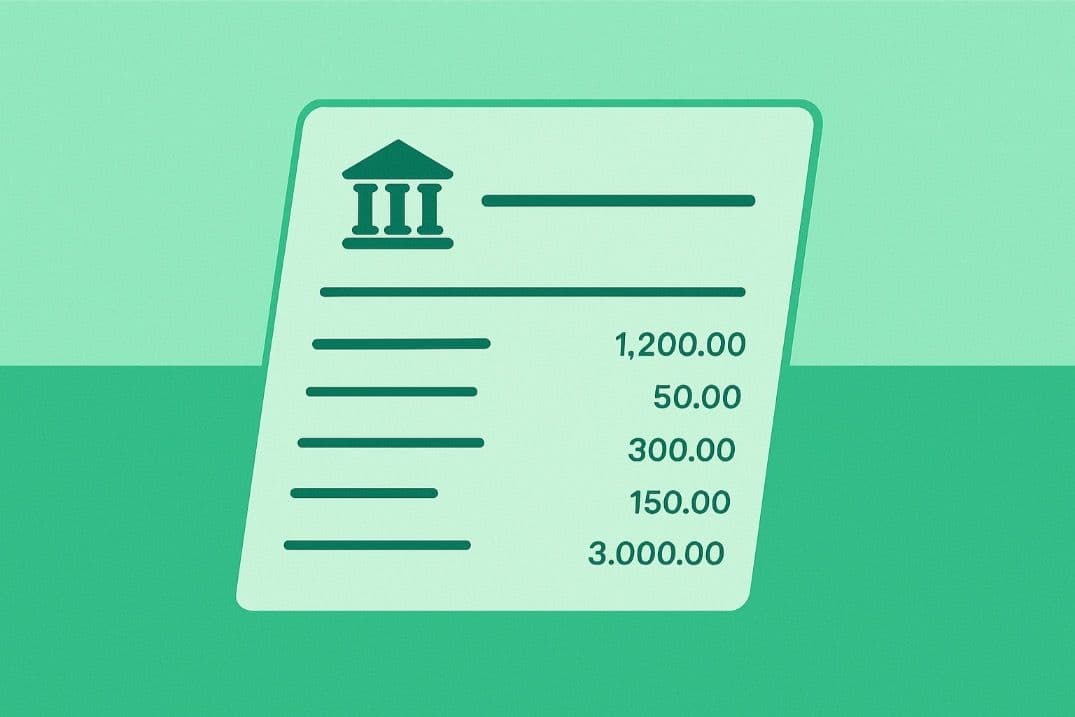What is a financial statement?

A financial statement is a record that captures the financial activities of a business. It shows where money comes from, where it goes, and where it sits. While a bank statement reflects activity in a bank account, a financial statement provides a broader overview of a company’s financial performance and position.
There are three critical components of any financial statement: the balance sheet, the income statement, and the cash flow statement.
Each serves a unique function in financial reporting, and together, they provide a picture of the business's financial health.
Balance Sheet
The balance sheet provides a snapshot of a company's financial condition at a specific point in time.
It is structured around the simple equation: Assets = Liabilities + Shareholders’ Equity
- Assets are resources that are expected to bring future economic benefits.
- Liabilities represent what the company owes and are similarly divided into current liabilities, due within one year, like accounts payable and short-term loans, and long-term liabilities, such as mortgages.
- Shareholders’ equity, represents the shareholders’ claims on the assets after all liabilities have been settled. It includes funds contributed by the owners plus retained earnings minus any dividends distributed.
Balance sheet example
To illustrate, consider a local bakery:
Total assets: $100,000 ($50,000 in cash, $30,000 in equipment (oven, mixers), and $20,000 in inventory)
Total Liabilities: $50,000 (The bakery owes $20,000 to suppliers and has a $30,000 loan)
Total owner’s equity: $50,000 (The owner's initial investment was $40,000, and the bakery has retained $10,000 in earnings)
According to the balance sheet equation:
Total Assets = Total Liabilities + Owner’s Equity
$100,000 = $50,000 + $50,000
This example demonstrates how the balance sheet reflects the financial position of the business, balancing out sources of funds (liabilities and owner’s equity) with the uses of those funds (assets). By studying this document, stakeholders can gauge the liquidity, solvency, and financial flexibility of the entity to manage its operations and obligations effectively.
This example clearly shows how the balance sheet serves as a mirror to the financial state of the business.
This allows stakeholders to assess the overall capacity of the business to meet its financial commitments.
Income Statement
The income statement is a crucial financial document that specifically measures a company's financial performance over a designated period, such as a quarter or year.
Purpose: detail how the revenues earned are transformed into the net income by subtracting all expenses, taxes, and additional income streams.
The top line of the income statement starts with revenue. From there, costs are subtracted to arrive at gross profit.
Operating expenses like salaries, utilities, and marketing costs are then deducted to determine operating profit.
Finally, taxes and interest are considered to calculate the net income.
Calculating Net Income: The formula for net income is:
Net Income = Total Revenue − Total Expenses
Case Study Example: Consider a tech startup, which launched a new software tool.
Total Revenue: $500,000
Total Expenses: $400,000 (The COGS totaled $200,000. Operating expenses amounted to $150,000. $30,000 in taxes and $20,000 in interest on borrowed funds)
The net income for the year stood at $100,000.
If this data originates from a bank report, tools that import bank statements into Excel can streamline the process of organizing and analyzing financial figures for reporting.
Cash Flow Statement
The cash flow statement is a financial document that tracks how cash moves in and out of a business over a specific period. Unlike the income statement, which accounts for revenues and expenses, the cash flow statement only considers actual cash movements.
This statement is crucial for understanding a company’s ability to generate cash to fund its operations, pay its debts, and invest in future growth.
It highlights whether a business is making money, as opposed to merely recording deferring liabilities, which can paint a more favorable picture of financial health than cash realities permit.
When preparing a cash flow statement based on raw bank data, using OCR technology can help extract accurate figures from scanned PDFs or image-based reports.
Three Sections of the Cash Flow Statement:
- Operating Activities: This section details cash flows from the core business operations, converting the items listed on the income statement from the accrual basis of accounting to cash. It includes cash received from customers and cash paid for goods and services, taxes, and interest.
- Investing Activities: This includes cash flows associated with the purchase and sale of long-term assets like property, plant, and equipment, as well as investments in other businesses.
- Financing Activities: It covers cash flows related to transactions with the company’s owners and creditors, including dividends paid, stock sales and repurchases, and borrowing.
Practical Example: Consider a company that reports a net income of $100,000.
Its cash flow statement reveals a different scenario. During the year, it received $50,000 less in cash from customers than the sales reported on the income statement due to an increase in accounts receivable.
It spent $30,000 on equipment and paid down $20,000 in debt.
Despite the reported profit, the company’s actual cash decreased by $20,000, showcasing that cash flow can diverge significantly from reported profit due to the timing of cash receipts.
This example underlines the importance of the cash flow statement in assessing a company's financial condition and the effectiveness of its cash management strategies.
Conclusion
Understanding each component of the financial statement is imperative for any business owner or financial professional.
The balance sheet, income statement, and cash flow statement together provide a comprehensive picture of a company's financial health.
By applying this knowledge, professionals can make more informed decisions, anticipate future financial needs, and drive their businesses toward sustained success.
It's also essential to ensure the accuracy of the documents used - bank statement verification is often part of due diligence when preparing formal financial statements.
To simplify managing the data from financial statements, consider using tools like convertbankstatement.io, which efficiently converts PDF financial statements into Excel format, making data analysis more accessible and streamlined.

